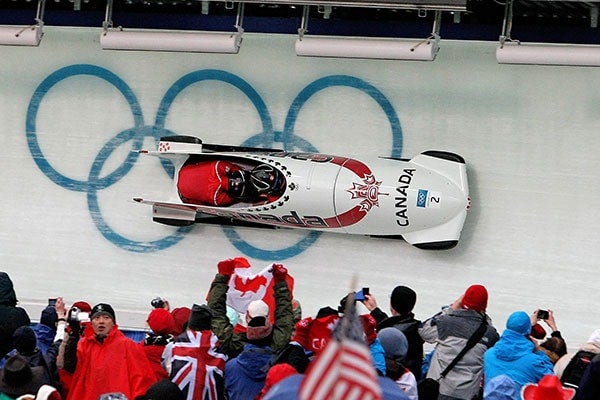
Risk and reward at the Winter Olympics
Published: February 6, 2014
The 2014 Sochi Olympics, February 7 to February 23, is the latest edition of the sports spectacular that captivates people worldwide.
While the technology for watching the Olympic events and staying abreast of results has changed, and the science behind athlete preparation has advanced, the passion for outstanding competition and the bursts of national pride remain.
For most athletes, the Olympic Games mark the pinnacle of their sports. The competitions seen on the screen are the culmination of years of hard work geared toward peaking at just the right moment.
Throughout the Games, the Faculty of Kinesiology & Physical Education will be looking behind the scenes at the Olympic experience, consulting experts on risk, concussions, nutrition, controversy and social issues – and talking to Olympians, current and former.
This is the first instalment of that series.
It’s the risk factor at the “Games of Ice and Snow” that makes the Winter Olympics so fascinating to watch, said Greg Wells, a physiology professor at the Faculty of Kinesiology & Physical Education.
“The potential consequences of mistakes in competition are quite a bit greater at the Winter Games than the Summer Games,” Wells said. “They are magnified by the speed and heights the athletes achieve, which makes it exciting.”
Performing at the Olympic level is so challenging, the fact “that the participants can do these sports at all is a testament to their training, their abilities and their dedication,” he said. "The athletes have eliminated every extra movement, so it looks clean, easy and smooth. It can be deceptive; then you realize how hard it really is.”
Wells identified a number of major physical challenges in various sports:
- The unbelievable strain on the legs and knees in downhill skiing
- The height achieved and the quickness of the rotations in freestyle aerials
- The aerobic demands of cross-country skiing
- One of the “toughest moves in all sport: the quad in figure skating”
Nonetheless, Wells noted that much more goes into winning in high performance sport than physical performance. Athletes today have integrated support teams with medical and nutrition staff, physiotherapists and sports psychologists. As well, there is a new technological component.
“Using the iPad for video analysis during training has revolutionized sport, since you can get instant feedback,” he said.
The Canadian Own the Podium program has allowed the Canadian team to take advantage of some of these advances.
“Before the Vancouver Olympics, Canadians didn’t expect to win, and now we do,” he said. “I find a shift in our nation and it permeates all aspects of culture.”
Wells enjoys seeing the new techniques and technologies that emerge at each Games. In 2014, he anticipates seeing advances in the fabrics used in speed skating suits to allow athletes to move faster, in more streamlined fashion. Already, he noted, the Canadian team is using a catapult system that allows them to practise turns at race pace without expending such an enormous amount of energy.
One sport to keep an eye on, he suggested, is bobsleigh. BMW was commissioned to build the U.S. team sled, which is made of carbon fibre and synthetics. The reduced weight will make acceleration easier.
Wells views the Games as applied research.
“Eventually, new techniques filter down to us mere mortals,” he said. “We, too, will be able to apply this learning to enhance performance.”
Elaine Smith is a writer with the Faculty of Kinesiology & Physical Education at the University of Toronto.



